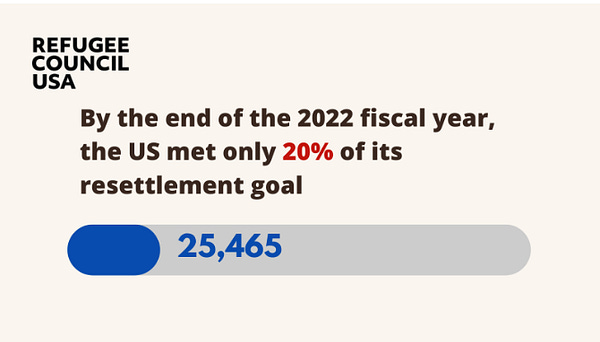'If That Ain't Love, I Don't Know What Is'
The Sunday Night Reader for 10/16/22
Power’s Currency
Everyone loves a lost manuscript, right? This one happens to be captured in an essay that reflects on the Obama years, the politics of Bayard Rustin, and their compromises. A good read with some nice digital elements to it. From the essay by historian Timothy Shenk:
“[I]n the aftermath of Lyndon Johnson’s landslide 1964 re-election, Mr. Rustin decided the country was ready for a radical push. According to him, abolishing formal segregation was just the first stage of the battle for civil rights. Securing true equality now demanded a campaign to overhaul the American economy and lift up workers of all races. Change at this scale required overwhelming public backing, and Mr. Rustin saw the elements of a new majority in President Johnson’s victory — an alliance of Blacks, liberals and blue-collar whites that he called the ‘March on Washington coalition.’
Mr. Rustin discussed coalition politics with the same passion he brought to crusading against Jim Crow. ‘We cannot talk about the democratic road to freedom,’ he said, ‘unless we are talking about building a majority movement.’ Republicans and Democrats had been divided along economic lines since the New Deal, when working-class voters stampeded into the Democratic column. Now Mr. Rustin saw the opportunity to turn the Democratic Party into a vehicle for both racial and economic justice, if activists turned the March on Washington coalition into a durable majority.
Barack Obama was barely out of diapers when Mr. Rustin laid out this sweeping program. As he grew into adulthood, Mr. Obama moved from a teenage bout with nihilism to an undergraduate flirtation with radicalism (‘some species of GQ Marxist,’ a classmate said) into a community organizer focused on bringing jobs to the South Side of Chicago. Through it all, he watched as backlash to the cultural upheavals of the ’60s and ’70s blew Mr. Rustin’s coalition to smithereens.
Around the world, left-wing parties lost ground with the working class. The exodus had a distinctly racial cast in the United States, where blue-collar whites fled the Democratic Party in droves. Even as African American politicians started winning elections in substantial numbers for the first time since Reconstruction, Republican victories at the national level placed strict limits on what local officials could achieve.
Mr. Obama saw those limits firsthand. In a 1988 essay written shortly before he left for Harvard, Mr. Obama argued that despite the ‘important symbolic effect’ of Black electoral victories, real change had remained out of reach. No single politician could reverse the global economic trends that had devastated urban America, especially when conservatives had a lock on the White House. It would take an enormous redistribution of resources to wrench the nation’s inner cities out of their downward spiral, and that would come about only with support from an electoral juggernaut.
Neither community organizing nor small-bore politics could address the problems facing Chicago, Mr. Obama decided. But he was putting together a strategy of his own.
‘I had things to learn in law school, things that would help me bring about real change,’ Mr. Obama later wrote. ‘I would learn power’s currency in all its intricacy and detail.’
Reality Check
A News-Gazette editorial last week blamed Biden policies for gas prices and claimed that the county “voluntarily forfeited” a geopolitical advantage by “suppressing fossil fuel production.” It says that the administration is discouraging oil production, even as the administration allows increased drilling and asks the companies to up refining. It provides no data to explain that claim.
There’s an argument to be made and a debate to be had on energy policy. The paper didn't bother to put in the leg work to have that. For those who are interested in a reality check, here’s what “suppressed” oil production looks like.
Peak annual US oil production was in 2019 at 12.3 million barrels a day. Projections for 2022 are 11.86 million barrels per day. That is about 96 percent of the drill baby drill era. Projections for 2023, which one presumes the News-Gazette considers Biden responsible for, are 12.7 million barrels. More than ever before.
On the refining side of things, US refineries put out about 18 million barrels per day. It’s off only about 5 percent since a 2020 high, as well. Folks may try to say that that's because of liberal policies or some such. Again, that might be an interesting argument if A) the paper bothered to make it, B) Biden hadn't asked companies to increase refining, and C) it weren't for the fact that a major oil refinery hasn't been built in the US since 1977.
These things are all “20 minutes worth of googling and reading” knowable. But the editorial just hand-waves, claims that Biden is somehow taking anti-oil actions rather than telling them to increase capacity, and ignores that here in this capitalist democracy oil companies make their own investment decisions.
I support nixing Russian energy to support Ukraine, and I support removing fossil fuels from our energy mix overall. That means higher gas prices. I don't support the paper ignoring facts in order to write a pat and tendentious editorial.
The Answer Will Not Surprise You
Why aren’t their any Native American reservations in Illinois? If you have any sense of history, the answer will not surprise you. But WBEZ’s timeline of the tribes of Illinois and their treatment is still worth a good look. Read more.





